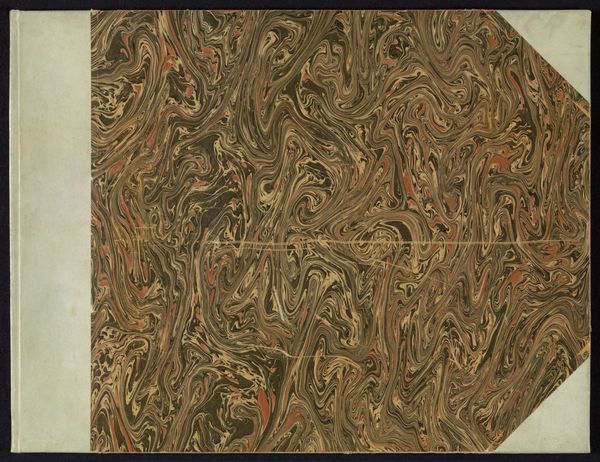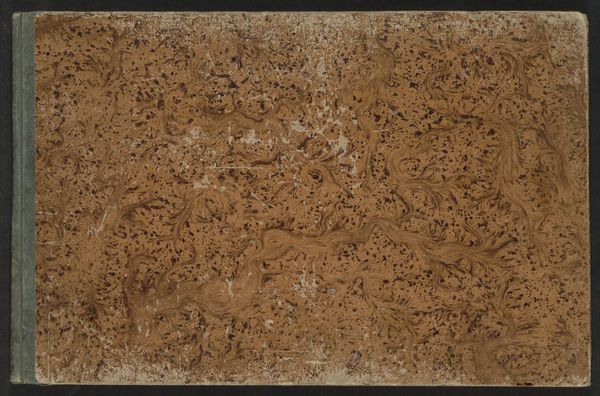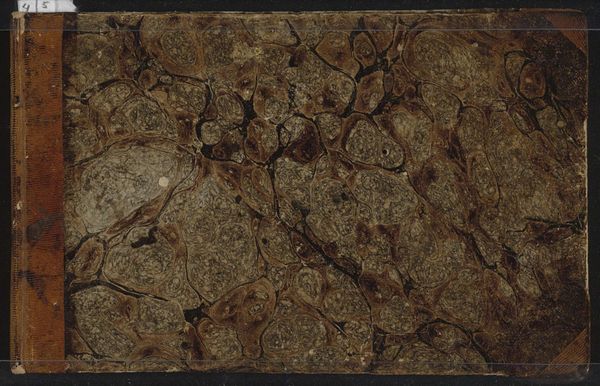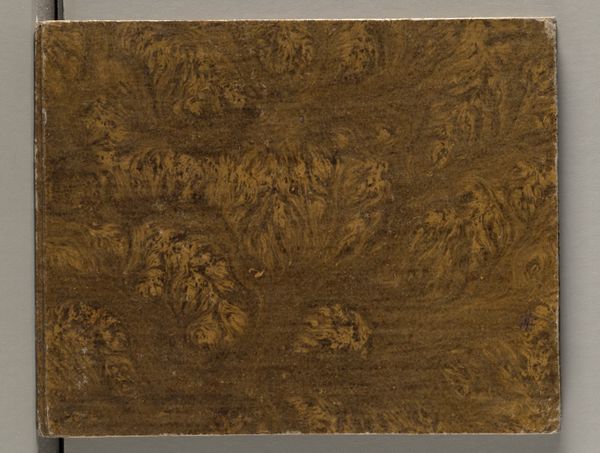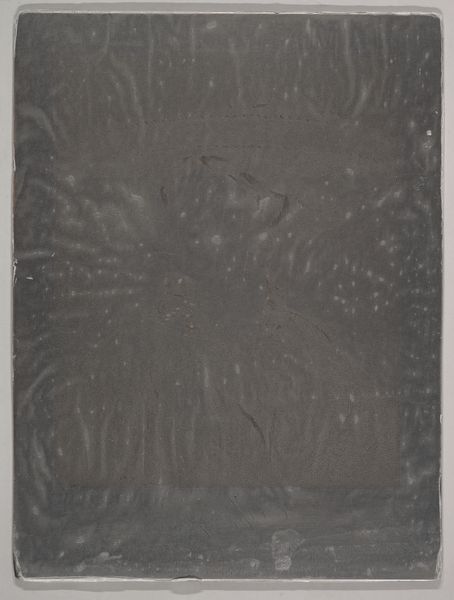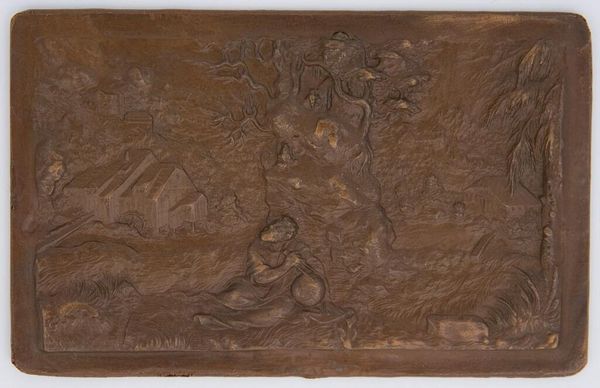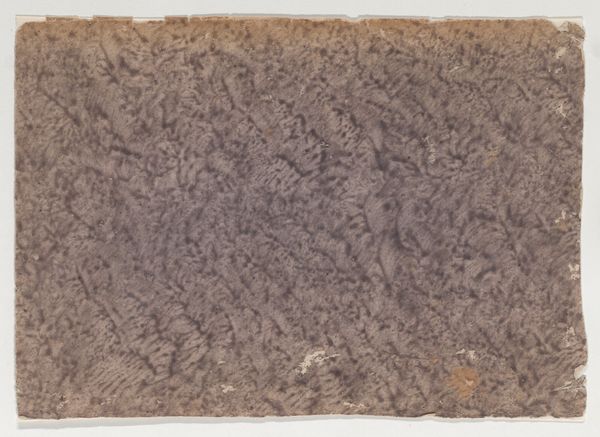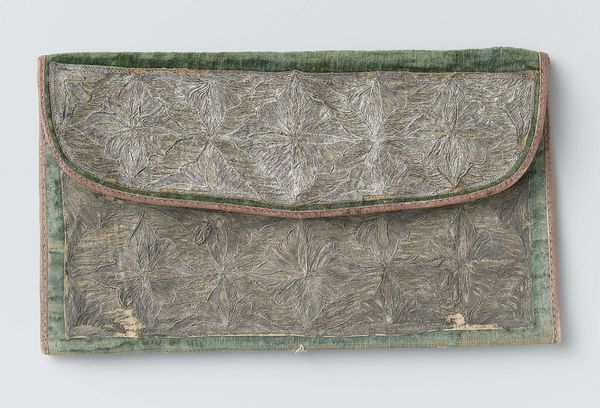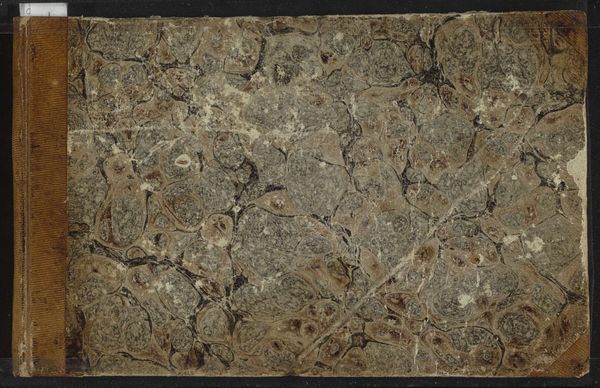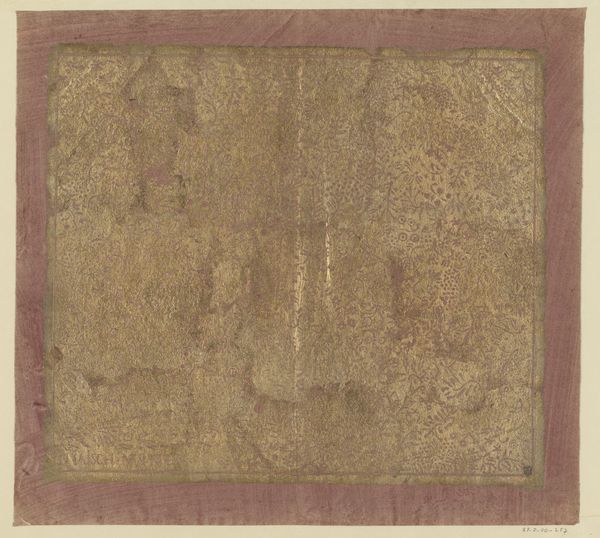
Fotoalbum van een reis door Zwitserland, Oostenrijk en Duitsland door de Nederlandse familie Derkinderen c. 1864 - 1865
0:00
0:00
Dimensions: height 160 mm, width 508 mm, width 230 mm, thickness 600 mm
Copyright: Rijks Museum: Open Domain
Editor: This is a photograph album from a Dutch family's travels, likely created around 1864 or 1865. It's covered in a beautiful, intricate wood carving. I find the density of the foliage a little overwhelming. What compositional elements stand out to you? Curator: The rhythmic repetition of the oak leaves and branches establishes a clear visual structure. Observe how the carver uses positive and negative space to create a balanced composition. Note the intricate textures achieved through carving—a skillful demonstration of technical prowess. Editor: Yes, the texture is incredible. But I keep wondering why oak leaves were chosen as the primary motif. Does it carry any symbolic meaning in terms of its form and placement? Curator: Oak leaves traditionally symbolize strength, endurance, and longevity. Here, the motif might also evoke the natural landscapes visited on the family's travels. Consider, too, the way the repetitive pattern functions—almost as a visual echo of the many journeys recorded within the album itself. Editor: So, you're saying the foliage isn't merely decoration; it echoes the family's travel experiences and aspirations? Curator: Precisely. The dense network of leaves and branches could symbolize the complex tapestry of memories and experiences woven together during their travels. Editor: This is more complex than it initially seemed. Seeing the album through a structural lens unlocks these additional levels of meaning within the composition. Curator: Indeed. Appreciating the artist's skillful deployment of texture, form, and symbolic representation can lead to a richer engagement with this seemingly simple photograph album.
Comments
No comments
Be the first to comment and join the conversation on the ultimate creative platform.
